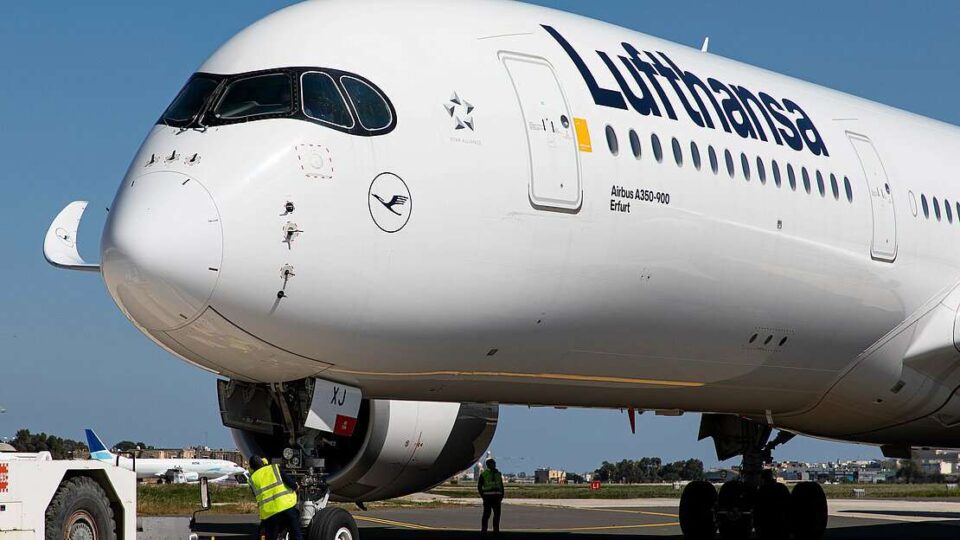Aerospace
Lufthansa orders 22 latest-generation long-haul aircraft with list price of $7.5 billion

- Orders placed for ten Airbus A350-1000s, five Airbus A350-900s, and seven Boeing 787-9s
- Fleet modernization further accelerated / substantial contribution to achieving 2030 carbon emission goals
- Lufthansa Group and Airbus strengthen cooperation on sustainability and future technologies
- Lufthansa Group to take delivery of 108 latest-generation long-haul aircraft over the next few years
- Six older aircraft types to be withdrawn in the medium term including the four-engined Boeing 747-400, Airbus A340-600 and Airbus A340-300
The Lufthansa Group is purchasing more state-of-the-art long-haul aircraft. The Group Executive Board has resolved to order
- ten Airbus A350-1000 passenger aircraft
- five Airbus A350-900 passenger aircraft
- seven Boeing 787-9 ‘Dreamliner’ passenger aircraft
The orders were approved today by the Supervisory Board of the parent company Deutsche Lufthansa AG. The aircraft concerned will be delivered to the Lufthansa Group from the mid-2020s onwards. Based on list prices, the order is worth a total of about 7.5 billion US dollars and is in line with Group’s mid-term financial planning.
With today’s orders included, the Lufthansa Group will take delivery of 108 state-of-the-art long-haul aircraft such as the Airbus A350-1000, the Airbus A350-900, the Boeing 787-9, and the Boeing 777-9 over the next few years. In doing so, the Group will operate the quietest, most profitable, and most economical long-haul aircraft that are currently in service. On average the new aircraft consume just 2.5 liters of fuel per passenger per 100 kilometers – some 30 percent less than their predecessor aircraft types.
The new long-haul aircraft will also replace older aircraft types. In the medium-term future, six such sub fleets will be taken out of service: the four-engined Boeing 747-400s, Airbus A340-600s and Airbus A340-300s and the two-engined Boeing 777-200s, Boeing 767-300s and Airbus A330-200s. This will reduce the quadjet contingent within the Lufthansa Group fleet to under 15 percent: prior to the pandemic, quad jets made up some 50 percent of the groupwide aircraft fleet.
The Airbus A350-1000
The Airbus A350-1000 will be a new addition to the Lufthansa Group fleet. The aircraft is 73.8 meters long and offers some 15 percent more capacity than the Airbus A350-900. The ten A350-1000s on order should primarily be deployed in premium-heavy markets. Therefore all these aircraft will be equipped with a First Class cabin.
The Airbus A350-900
Lufthansa already operates 21 of these aircraft with sizeable success. With the five aircraft ordered today, the Lufthansa Group will now take delivery of 33 further transports of this long-haul aircraft type.
The Boeing 787-9
Three Boeing 787-9s are presently in Lufthansa Group service. With today’s order included, 36 further Boeing 787-9s will join the Group fleet over the next few years.

Aerospace
Boeing Transfers Rocket Stage to NASA, Paving Way for Human Moon Mission

Boeing has achieved a significant milestone by providing NASA with the second core stage of the Space Launch System (SLS) rocket.
This crucial component, crafted at NASA’s Michoud Assembly Facility (MAF), is set to propel the Artemis II crew into lunar orbit, marking humanity’s return to deep space after a 50-year hiatus.
The monumental Boeing-built rocket stage, the largest element of the Artemis II mission, will embark on a journey aboard the Pegasus barge, traveling 900 miles to NASA’s Kennedy Space Center.
Comparison of two legendary aircraft B777x vs B747 aircraft:Click here
Upon arrival, it will be meticulously integrated with other essential Artemis II components, including the upper stage, solid rocket boosters, and NASA’s Orion spacecraft within the iconic Vehicle Assembly Building. This intricate integration process is a vital step toward the eagerly anticipated Artemis II launch, slated for 2025.
“Boeing-built products helped land humankind on the moon in 1969, and we’re proud to continue that legacy through the Artemis generation,” remarked Dave Dutcher, vice president and program manager for Boeing’s SLS program. “Together, with NASA and our industry partners and suppliers, we are building the world’s most capable rocket and paving the way to deep space through America’s rocket factory in New Orleans.”
NASA, Lockheed Martin Reveal X-59 Quiet Supersonic Aircraft:Click here
The delivery of Core Stage 2 marks a significant achievement in the evolution of the SLS rocket. Towering over 200 feet and powered by four RS-25 engines, this core stage, coupled with two solid-fueled booster rockets, will generate a staggering 8.8 million pounds of thrust. This immense power is crucial to launching Artemis II and future missions into the vast expanse of space.
The SLS rocket stands unparalleled in its capability to transport both crew and substantial cargo to the moon and beyond in a single launch. Its extraordinary capacity will facilitate the delivery of human-rated spacecraft, habitats, and scientific missions to destinations including the moon and Mars, ushering in a new era of space exploration.
-

 Travel1 week ago
Travel1 week agoAir India to Expand US Operations with Three New Routes After a Decade
-

 Travel2 weeks ago
Travel2 weeks agoWhy We Should Avoid These Stamps in a Passport
-

 Airlines1 month ago
Airlines1 month agoInvestigations Reveal Fake Chinese Titanium in Boeing and Airbus Jets
-

 Tech4 weeks ago
Tech4 weeks agoChina’s CATL Plans 1,800-Mile Electric Plane Launch by 2027
-

 Airport3 days ago
Airport3 days agoTop 10 Largest Airports in the World by Size
-

 Aerospace4 weeks ago
Aerospace4 weeks agoChina’s Fighter Jets Turn Wings into Autonomous Drones
-

 Airlines4 days ago
Airlines4 days agoAir India Rolls Out A350s for Delhi-New York JFK and Newark Routes
-

 Defence3 weeks ago
Defence3 weeks agoBoeing Enhances Chinook with New Engines and Block II Upgrades at $96 Million







